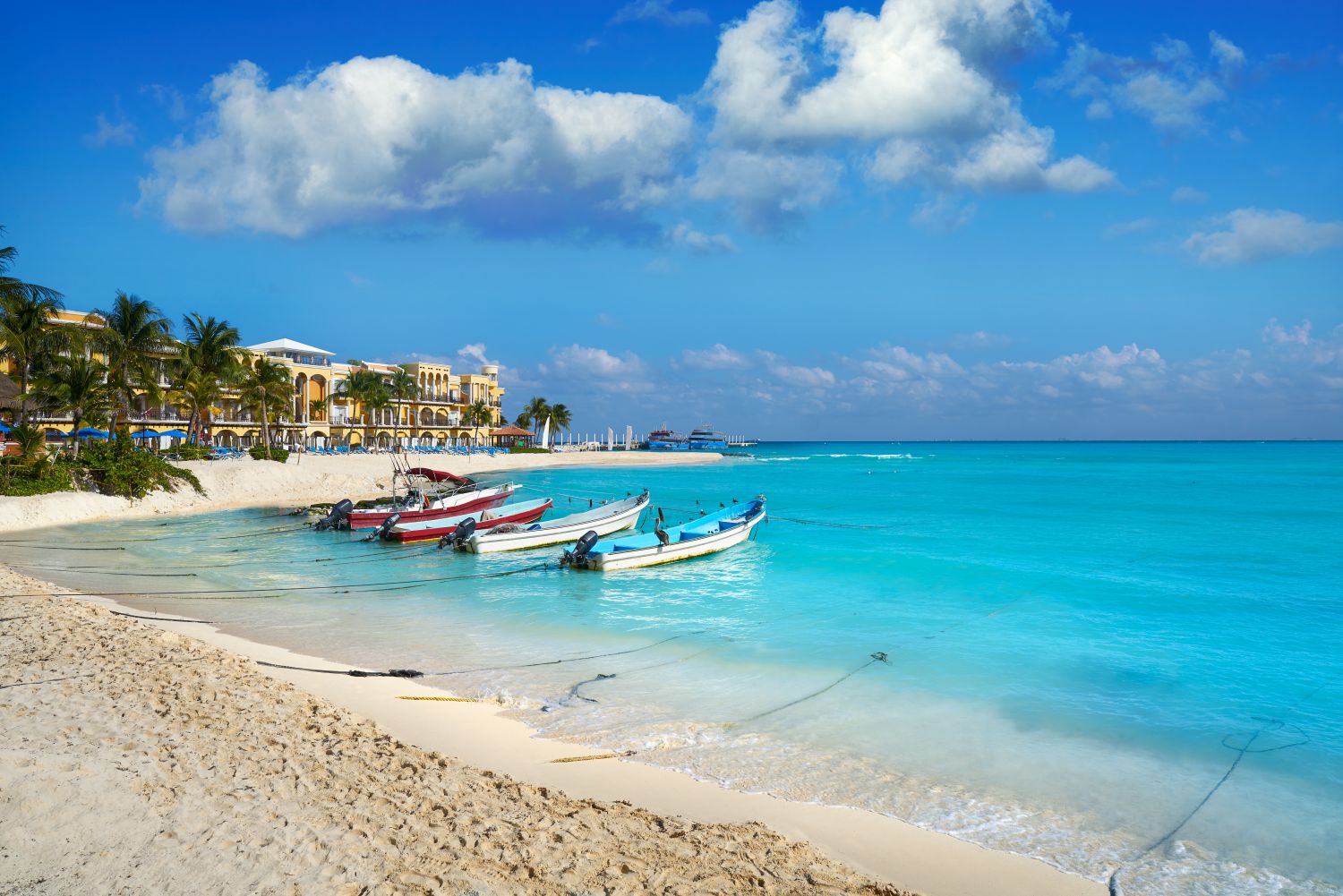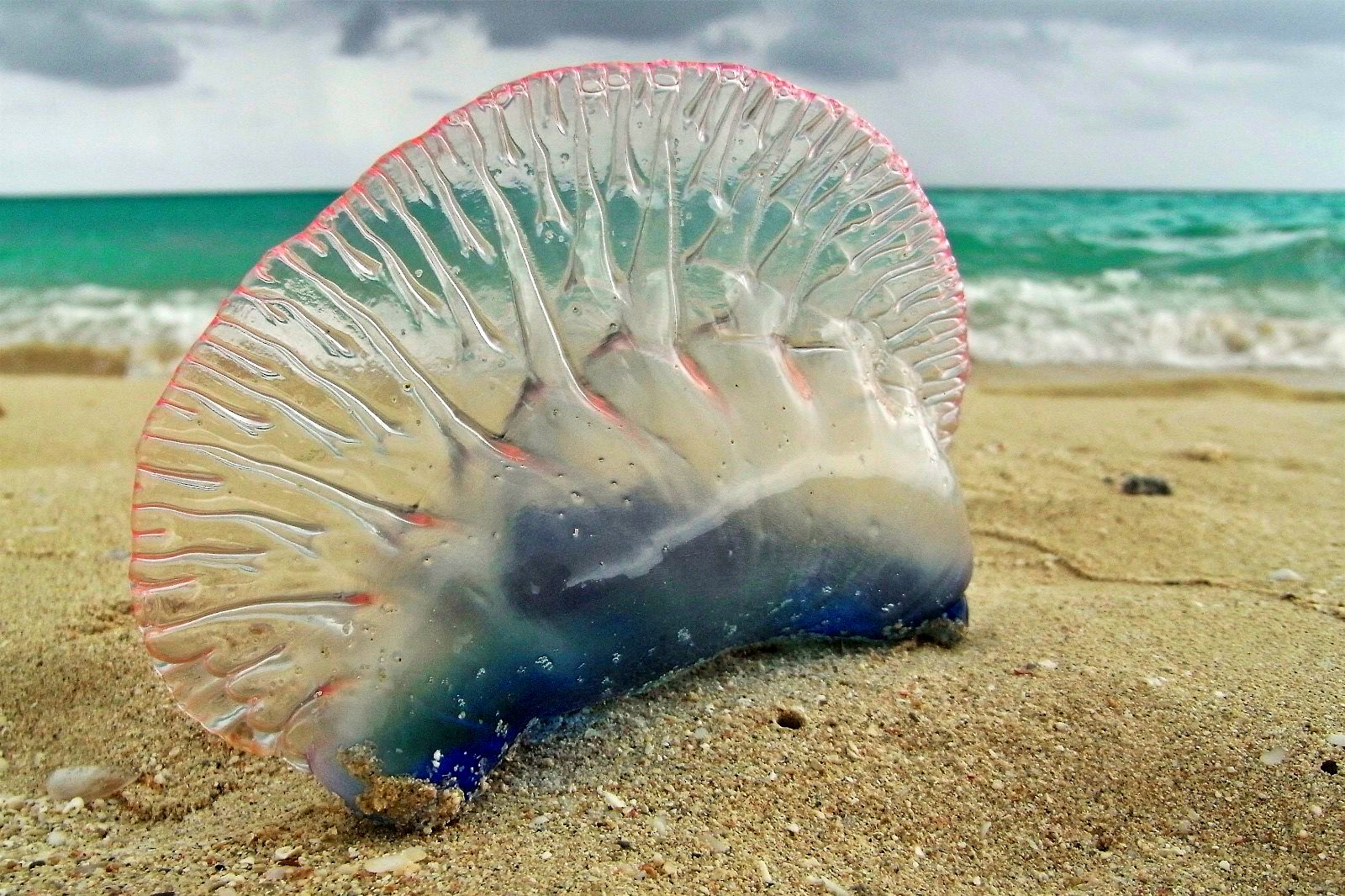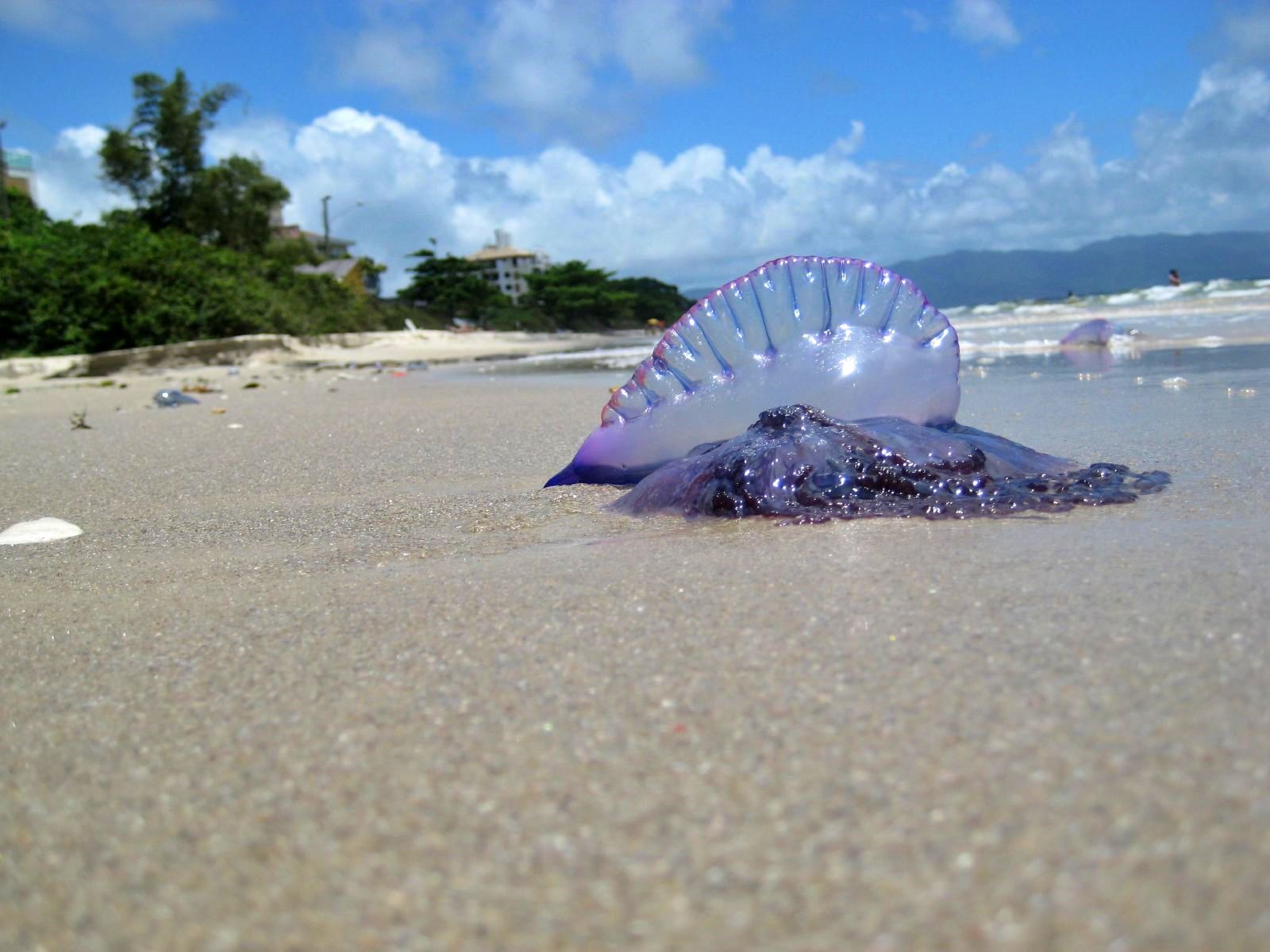
Portuguese Man O’ War on Mexican Caribbean Beaches
When thinking of dangerous marine life, the Jaws theme likely comes to mind, but it isn’t sharks that are the problem this time. Similar to a jellyfish, the Portuguese Man o’ War is the critter travelers are being warned about. These marine creatures are known for their painful sting, which can, in some cases, be deadly.

For now, travelers vacationing in the following locations should be vigilant and keep an eye out for this nasty, jellyfish-like creature:
- Playa Paraiso
- Punta Maroma
- Playa Del Carmen
- Cozumel (West)
- Puerto Aventuras
- Xpu Há
- Grand Sirenis
- Akumal
At this time, those visitors to popular Tulum are safe from the invasion, but this could, of course, change with the currents in the coming days.
About the Portuguese Man O’ War

Normally, a sting from this marine animal will simply cause a large red welt on the skin and a painful, stinging or burning sensation that lasts around 20 minutes. However, in some cases, the sting can lead to bouts of nausea, chest pain and difficulty breathing. Moreover, swimmers with underlying health conditions can, in extreme cases, suffer cardiac arrest. For that reason, it isn’t worth taking a chance while swimming in the Mexican Caribbean on vacation.
One thing readers should take note of is that it isn’t a good idea to prod or poke a Portuguese Man o’ War washed up on the sand. They can still give a painful sting for several days after their death.
What to do if stung by a Portuguese Man O’ War
If the victim is suffering mild symptoms, a trip to a local supermarket can ease the pain. Here, they should buy vinegar (Vinagre in Spanish) and apply it liberally to the affected area. This will neutralize the venom from the sting and relieve the pain.
The Cancun Sun warns that victims should never apply freshwater or ammonia to the affected area. Using those methods will only increase the potency of the venom, bringing even more pain. That is something to definitely avoid when on vacation in the Mexican Caribbean.
Meanwhile, if more extreme side effects are felt, including trouble breathing or nausea, it is vital to seek immediate medical attention.




Leave a reply